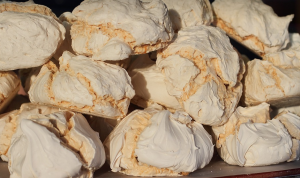
The magic begins in early summer when the sugar maple starts its slow but steady climb toward fall’s arrival. As the days grow shorter and nights lengthen, a subtle shift occurs within the tree’s veins. A complex interplay of hormones triggers the green chlorophyll to break down, revealing the vibrant hues that lie hidden beneath.
The leaves change color in a mesmerizing dance orchestrated by nature’s own hand. A process fueled by environmental factors like sunlight and temperature plays a crucial role. The sugar maple’s unique ability to produce pigments like anthocyanins, responsible for the brilliant reds and purples, is what gives its foliage such an enchanting display.
As the days become shorter and cooler in late summer and early fall, a dramatic shift takes place within the sugar maple’s leaf structure. The chlorophyll’s role as the tree’s primary pigment begins to decline, allowing the other pigments – carotenoids and anthocyanins – that were present all along to take center stage.
The vibrant hues of crimson red, scarlet orange, and golden yellow are now visible, showcasing a masterpiece of nature’s creativity. It is a sight that evokes a sense of wonder as if the leaves themselves were painting their own farewell before surrendering completely.
On a chilly fall day, the sugar maple unfolds its breathtaking canvas, adorned with a mosaic of vibrant hues. The golden-yellow hues are reminiscent of summer’s warmth; the scarlet, fiery orange reflects the intensity of autumn’s spirit; and the deep crimson, almost tinged with purple, adds an air of mystery to the scene.
The sugar maple’s transformation throughout the fall is a testament to life’s constant cycle of change. This tree, standing strong through the changing seasons, embodies the very essence of autumn’s magic – a time of reflection and renewal that finds its perfect expression in nature’s artistry.
**A Visual Feast for the Eyes:** The process of sugar maple leaf transformation is much more than just changes to color. It’s an intricate dance of cellular activity, resulting in a breathtaking spectacle of change.
As summer wanes and fall steps onto the stage with its vibrant hues, the leaves begin to loosen their grip on their branches, preparing for their final act.
The process of leaf shedding is triggered by the tree’s internal clock, a mechanism that ensures every part of the plant gets ready for winter. The sugar maple’s adaptation to the approaching colder temperatures and shorter days is evident in its leaves, which slowly detach from the branches, gracefully descending to the ground.
The fall foliage provides a vibrant backdrop for nature’s other seasonal transformations: the shedding of bark, the migration of birds, and even the hibernation of animals. The sugar maple, with its stunning visual display, serves as a reminder that beauty is found in every stage of life, from its beginning to its end.
It’s not just about the vibrant colors, though. The sugar maple’s leaves also play a crucial role in the ecosystem. As they fall, they act as natural fertilizer for the soil, enriching it with essential nutrients. This decomposition process provides much-needed organic matter to the ground, promoting healthy growth and development for future seasons.
The sugar maple’s leaves are a treasure trove of biodiversity. As they decompose, they provide sustenance and cover for countless insects, amphibians, and other creatures. The fallen leaves serve as natural insulation, protecting the soil from erosion and maintaining its structure. As nature prepares to enter winter’s embrace, the sugar maple offers us a reminder of life’s cyclical beauty that thrives through every season.
The sugar maple’s transformation is more than just a visual spectacle; it is a story of resilience, adaptation, and natural wonder. Its journey from vibrant green to an array of fiery hues is a testament to nature’s artistry.



